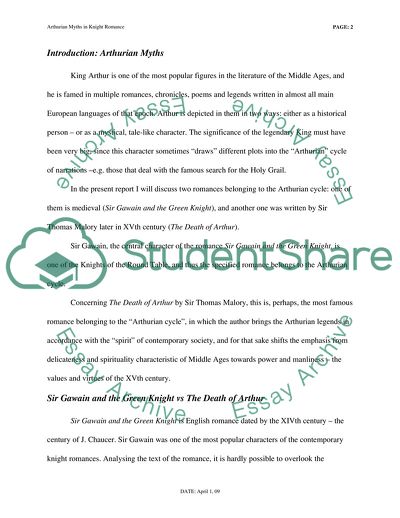Cite this document
(The Implementations of the Arthurian Myths Coursework, n.d.)
The Implementations of the Arthurian Myths Coursework. Retrieved from https://studentshare.org/literature/1722319-analyse-the-uses-made-of-the-arthurian-myths-in-one-or-more-medieval-texts-and-one-or-more-later-reworkings
The Implementations of the Arthurian Myths Coursework. Retrieved from https://studentshare.org/literature/1722319-analyse-the-uses-made-of-the-arthurian-myths-in-one-or-more-medieval-texts-and-one-or-more-later-reworkings
(The Implementations of the Arthurian Myths Coursework)
The Implementations of the Arthurian Myths Coursework. https://studentshare.org/literature/1722319-analyse-the-uses-made-of-the-arthurian-myths-in-one-or-more-medieval-texts-and-one-or-more-later-reworkings.
The Implementations of the Arthurian Myths Coursework. https://studentshare.org/literature/1722319-analyse-the-uses-made-of-the-arthurian-myths-in-one-or-more-medieval-texts-and-one-or-more-later-reworkings.
“The Implementations of the Arthurian Myths Coursework”. https://studentshare.org/literature/1722319-analyse-the-uses-made-of-the-arthurian-myths-in-one-or-more-medieval-texts-and-one-or-more-later-reworkings.


